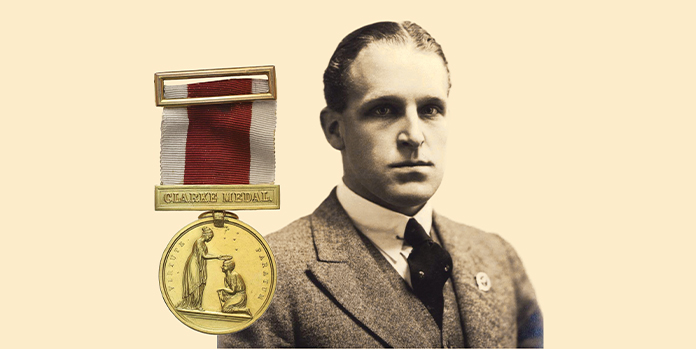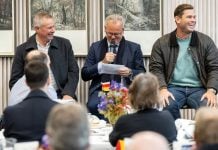How do you define courage? Each of us has our own ‘vocabulary’ when it comes to bravery. For many, it includes the valour of members of the armed forces, firefighters, and police officers. However, here is an Old Melburnian whose story you might want to add to your lexicon of courage: Otto ‘Rob’ Yuncken (OM 1921).
Otto began his journey at Melbourne Grammar School in 1918. On the surface, he seemed like a typical student. Yet, courage, they say, often shows itself in unexpected ways. For Otto, perhaps the interest and skill he showed in debating while at the School was an early sign of his bravery. Speaking confidently before an audience is no small feat.
However, Otto’s courage was truly tested a few years later in a harrowing mountain climbing incident. At the age of 20, while climbing with his friend and fellow architecture student George Nichterlein, disaster struck. George fell approximately 30 metres down a steep gorge, becoming trapped on precarious rocks. Facing near-impossible terrain, Otto repeatedly risked his life, making the perilous climb four times to reach George, provide first aid then rescue his friend.
For this heroic act, Otto was awarded the Clarke Gold Medal by the Royal Humane Society of Australasia in 1924. This award is given to the most outstanding act of bravery in Australia each year.
In 1933, during the throes of the Great Depression, Otto demonstrated another kind of courage by leaving his current place of employment and co-founding the architectural firm Yuncken, Freeman Brothers and Griffiths. With a young family and an Australian unemployment rate of about 30%, this move was a bold one.
After completing his architecture degree, Otto had travelled to Europe and America to deepen his expertise in hospital architecture – a field Otto was passionate about, and it was for the work in this area that Otto’s firm would become known.
WWII further showcased Otto’s bravery and skill. His architectural knowledge led to his role as a consulting architect to the United States Army, eventually becoming the Chief of Design for the US Services of Supply in the Southwest Pacific. His work was pivotal in developing prefabricated hospitals for Pacific battle areas, saving countless lives. Leading these large, complex projects under intense pressure demanded immense courage and skill.
Otto held many leadership roles throughout his lifetime. In addition to being a key member of the Council of the Royal Victorian Institute of Architects for many years, he served as President of the Royal Australian Institute of Architects in 1939 and 1940. Leading during a period when Australian architects were diverging from British and European influences to develop their own unique style required a special kind of courage, and Otto demonstrated this throughout his career.
An obituary in the journal published by the Royal Australian Institute of Architects highlighted Otto’s legacy: “For many years, Otto gave distinctive service to the advancement of architecture and was personally responsible to a great extent for the increasing prestige of the profession in Victoria.”
Otto Yuncken’s life exemplifies courage in many forms—rescuing a friend from a deadly gorge, founding a business during economic hardship, contributing significantly to wartime medical infrastructure, and providing distinctive leadership within his profession. His story is a testament to the extraordinary potential within seemingly ordinary lives.
You can read a lengthy excerpt from The Melburnian 1924 vol 49, p 187 which describes Otto Yuncken’s harrowing rescue of George Nichterlein in the more detail here.



